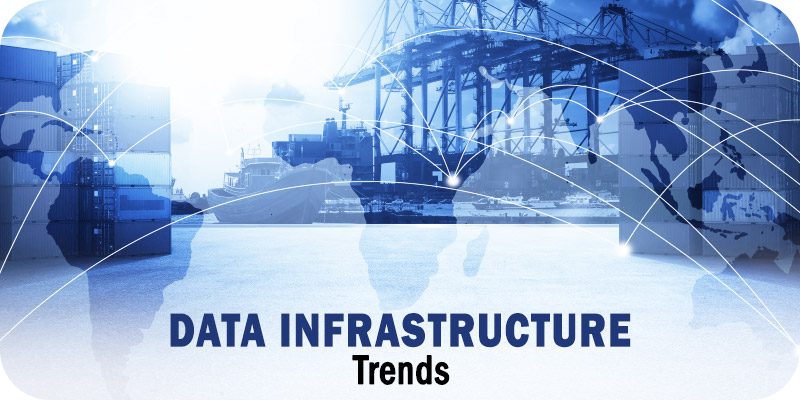2023 Data Infrastructure Trends to Watch by Denodo’s Angel Viña


This is part of Solutions Review’s Premium Content Series, a collection of contributed columns written by industry experts in maturing software categories. In this submission, Denodo Founder and CEO Angel Viña offers five key data infrastructure trends he’s watching for 2023, along with commentary on what’s next.
 As we are nearing 2023, it’s clear that digital business is not just a stopgap solution for the last 2-3 years, but a permanent way to do business. Companies accelerated their digital transformation to run their day-to-day online businesses as COVID 19 ran rampant and realized that they are not only able to offer better products and services through multichannel strategies but are also able to hyper-personalize their product and services offering for better customer experience. As businesses become prevalent and convenient through mobile and desktop devices, consumers have started engaging with businesses more frequently, making it a win-win situation for both business and consumers.
As we are nearing 2023, it’s clear that digital business is not just a stopgap solution for the last 2-3 years, but a permanent way to do business. Companies accelerated their digital transformation to run their day-to-day online businesses as COVID 19 ran rampant and realized that they are not only able to offer better products and services through multichannel strategies but are also able to hyper-personalize their product and services offering for better customer experience. As businesses become prevalent and convenient through mobile and desktop devices, consumers have started engaging with businesses more frequently, making it a win-win situation for both business and consumers.
But at the heart of these business transformations is data and related infrastructure. As digital transformation continues to accelerate, there is a deluge of innovations in the data and analytics space, specifically in data management. With numerous choices at their disposal, CIOs and CDOs are betting on, and investing in, technologies, processes, and practices that they think will have the biggest economic impact in their data and analytics investments.
While we are seeing many such interesting data and infrastructure-related practices, we believe these five trends will have an immense impact on digital transformation during the course of 2023:
Data Infrastructure Trends for 2023
As Recession Looms, Companies Optimize Infrastructure Cost
Whether North America is in recession or not, companies are actively cutting costs, and reducing IT infrastructure, which has always been an easy choice for CEOs. While compute and storage costs continue to be reduced through the usage of cloud it still can lead to huge bills for organizations given their heavy investments in data and analytics infrastructure. Thanks in part to the breadth of choices of storage, compute, and applications, companies often take a rip-and-replace strategy to modernize their data and analytics efforts. That approach is not only is costly, but it can often lead to disruption in IT operations. In 2023, more companies will see IT focusing on modern, non-disruptive ways to update their IT infrastructure, whether their data resides entirely in one cloud, multiple clouds, or in a hybrid environment including on-premises.
FinOps Becomes Necessary
For many companies, strategic data assets are spread across multiple clouds and geographical locations, whether that is because various business units or locations have their preferred cloud service provider (CSP), or because merger and acquisitions have led these assets to reside in different cloud providers’ boundaries. As more data continues to move to the cloud, and different geographies see prominence of certain cloud providers vs. the others, there is accelerated adoption of multi-cloud architecture for multinational corporations. Currently, there is no easy way to manage and integrate data and services across these different CSPs.
Failure to address this problem always results in data silos and a fragmented approach to data management, leading to data access and data governance complications.
Also, and contrary to popular belief, cloud costs are increasingly becoming a material expense due to the sheer volume of data and related egress charges, to name a few. For many organizations, cloud investments do not deliver the economic and business benefits as intended. As a result, they are leveraging FinOps to provide a framework for controlling cloud costs and usage, identify cost vs. value, and understand ways to optimally manage it across modern hybrid and multi-cloud environments. In the coming year, expect FinOps to gain momentum as a critical initiative to help companies better manage their hybrid-cloud and multi-cloud spend.
Accelerated Adoption of Data Fabric & Data Mesh
Over the past two decades, data management has gone through cycles of centralization vs. decentralization, including databases, data warehouses, cloud data stores, data lakes, etc. While the debate over which approach is best has its own proponents and opponents, the last few years have proven that data is more distributed than centralized for most of the organizations. While there are numerous options for deploying enterprise data architecture, 2022 saw accelerated adoption of two data architectural approaches – data fabric and data mesh, to better manage and access the distributed data.
While there is an inherent difference between the two, data fabric is a composable stack of data management technologies, and data mesh is a process orientation for a distributed groups of teams to manage enterprise data as they see fit. Both are critical to enterprises that want to manage their data better. Easy access to data and ensuring it’s governed and secure, is important to every data stakeholders — from data scientists all the way to executives. After-all, it is critical for dashboarding and reporting, advanced analytics, machine learning, and AI projects.
Both data fabric and data mesh can play critical roles in enterprise wide data access, integration, management and delivery, when constructed properly with the right data infrastructure in place. So in 2023, expect toa rapid increase in adoption of both architectural approaches within mid-to-large size enterprises.
Ethical AI Becomes Paramount
Companies across industries are accelerating the usage of AI for their data-based decision making. Whether it’s about social media platforms suppressing posts, connecting healthcare professionals with patients, or large wealth management banks granting credits to their end consumers; However, when artificial intelligence decides the end result, currently there is no way to suppress the inherent bias in the algorithm. That is why emerging regulations such as
the proposed EU Artificial Intelligence Act, and Canada’s Bill C-27 (which may become the Artificial Intelligence and Data Act if enacted) are starting to put a regulatory framework around the use of AI in commercial organizations. These new regulations classify the risk of AI applications as unacceptable, high, medium, or low risk and prohibit or manage the use of these applications accordingly.
In 2023, Organizations will need to be able to comply with these proposed regulations, including ensuring privacy and data governance, algorithmic transparency, fairness and non-discrimination, accountability, and auditability. With this in mind, organizations have to implement their own frameworks to support ethical AI e.g. guidelines for trustworthy AI, peer review frameworks, and AI Ethics committees. As more and more companies put AI to work, ethical AI is bound to become more important than ever in the coming year.
Augmentation of Data Quality, Data Preparation, Metadata Management & Analytics
While the result of many data management efforts is to feed advanced analytics and support AI and ML efforts, proper data management itself is pivotal to an organization’s success. Data is often being called the new oil, because data- and analytics-based insights are constantly propelling business innovation. As organizations accelerate their usage of data, it’s critical for companies to keep a close eye on data governance, data quality and metadata management.
Yet, with the growing amount of volume, variety, and velocity of data continues, these various aspects of data management have become too complex to manage at scale. Consider the amount of time data scientists and data engineers spend finding and preparing the data, before they can start utilizing it. That is why augmented data management has recently been embraced by various data management vendors, where, with the application of AI, organizations are able to automate many data management tasks.
According to some of the top analyst firms, each layer of a data fabric — namely data ingestion, data processing, data orchestration, data governance, etc. should have AI/ML baked into it, to automate each stage of the data management process. In 2023, augmented data management will find strong market traction, helping data management professionals focus on delivering data-driven insights rather than being held back by routine administrative tasks.
What’s Next?
If the last couple of years have taught us something, it is the fact that digital business is here to stay. Even with the rapid adoption and acceleration of digital transformation across industries, it’s still in its infancy. It is not hard to imagine that the pace of digital transformation and related innovations in the data and infrastructure market will only accelerate throughout 2023 and we will see many more data trends setting the path to the future. Some of these
innovations probably will be around DataOps, proliferation of continuous decision process lifecycle, data protection, data utilization etc. As CIO and CDO offices take more of a central role in the success of the company, their individual success will depend on the level of innovation in the data and infrastructure space. If not the survival of the fittest, from data team’s standpoint, it will be the dominance of the most innovative.



















